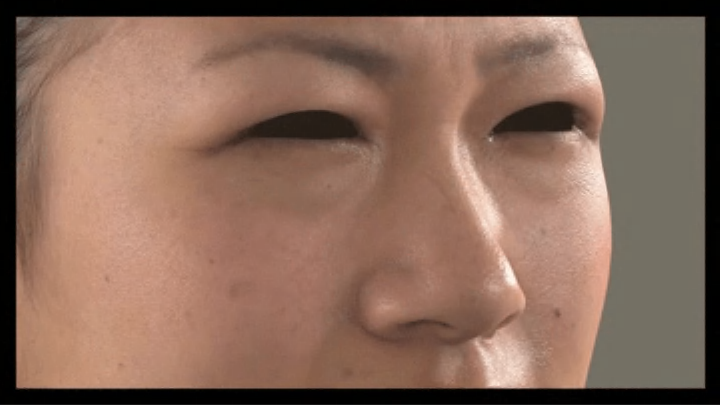Computer graphics populate the levels of your favorite video games and help turn actors into superheroes. Bad CGI can derail a project and distract the audience, but when done skillfully, it can seamlessly fill gaps and enhance the overall viewing experience. A recent breakthrough in creating CGI skin by researchers at the USC Institute for Creative Technologies and Imperial College London is changing the game, and will most certainly raise the bar for what can be considered “realistic.”
By developing a “10-micron resolution scanning technique” to capture very subtle skin microstructure deformations, the researchers were able to translate the tiniest movements in the skin and pores into usable data. The data was then used to manipulate the CGI character’s artificial flesh, resulting in rendered skin that stretches and compresses in ways that are more nuanced and realistic than ever before. The next step would be to study and use this technique to mimic various emotions, as well as differences in expression across age, race, and gender.
This is a major development, and one that computer graphics designers have been building towards for decades. Back in 1992, the makers of the film Death Becomes Her used CGI skin software (paired with silicone and animatronics) in various scenes and took home the Academy Award for Best Achievement in Visual Effects. Fast forward to 1997, and Pixar was pushing the envelope with CGI textures and skin with Geri’s Game, a short that also snagged an Academy Award.
As the years progressed, the software seemed to peak at a point where CGI skin looked real, but not photo-real (this scene in The Matrix Reloaded is a good example). Attempts to make actors seem younger or to help them achieve inhuman feats with “digital cosmetic enhancements” was impressive, but still unnatural and a little weird. This CGI sits firmly in what is often called the “uncanny valley,” a step just shy of photorealism that evokes a negative emotional response.
Is it possible that this study could be the key to escaping that uncanny valley? Check out the video below, which explains the study and its findings, and head to the project website to read the technical paper in full.
